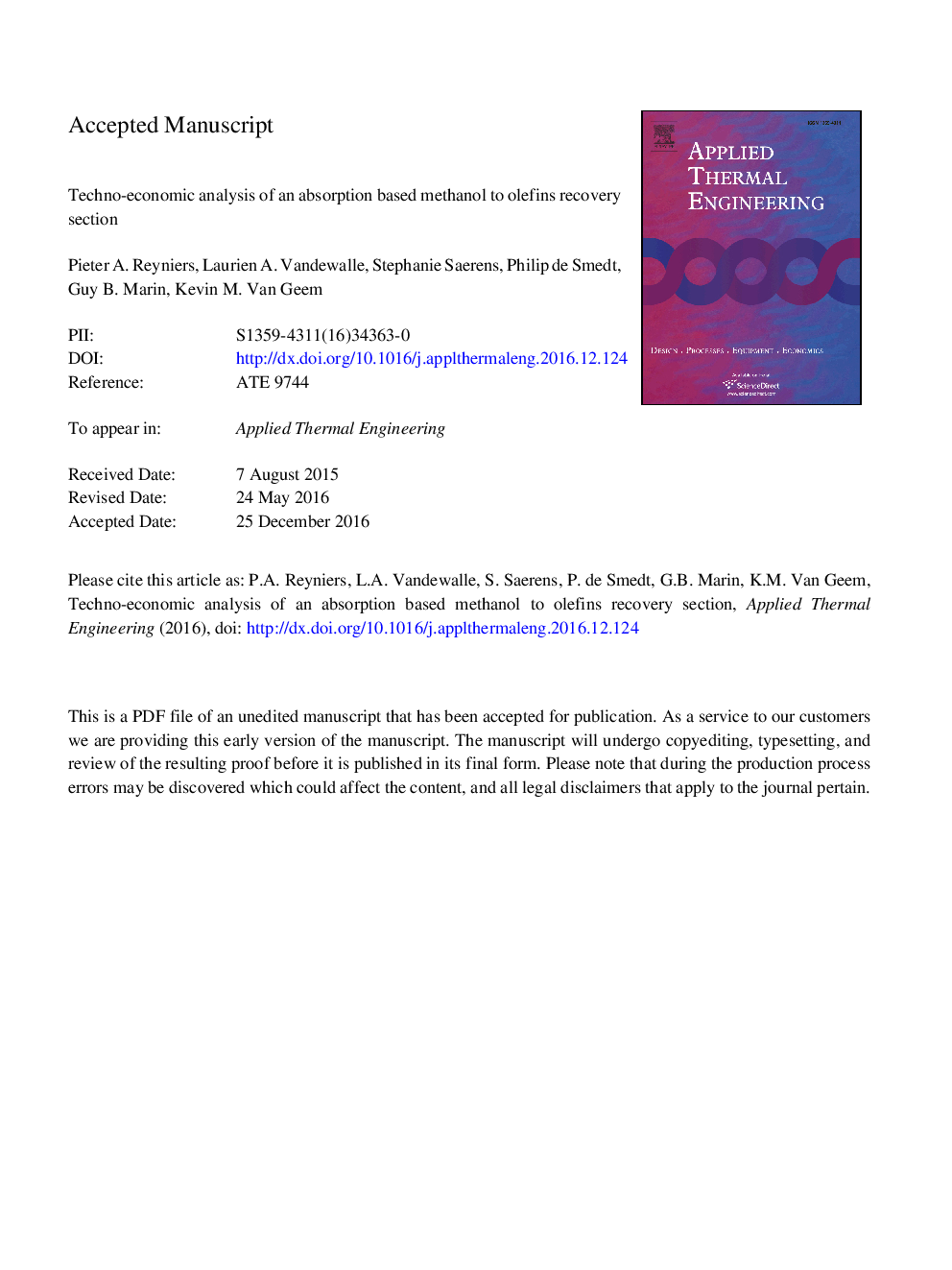| Article ID | Journal | Published Year | Pages | File Type |
|---|---|---|---|---|
| 4991618 | Applied Thermal Engineering | 2017 | 49 Pages |
Abstract
Pinch analysis showed that the heat integration potential for both separation sections is nearly identical, but the absorption configuration operates at a higher thermodynamic efficiency. The cryogenic separation section has a higher robustness when the amount of light ends in the reactor effluent varies. The capital expenditure of the absorption configuration is up to 14% lower and the operational expenditure is up to 9% lower compared to the cryogenic configuration, depending on the light ends content in the reactor effluent, leading to more favorable economic key performance indicators. The novel absorption configuration is an interesting alternative to the traditional cryogenic configuration for a methanol to olefins separation section.
Related Topics
Physical Sciences and Engineering
Chemical Engineering
Fluid Flow and Transfer Processes
Authors
Pieter A. Reyniers, Laurien A. Vandewalle, Stephanie Saerens, Philip de Smedt, Guy B. Marin, Kevin M. Van Geem,
